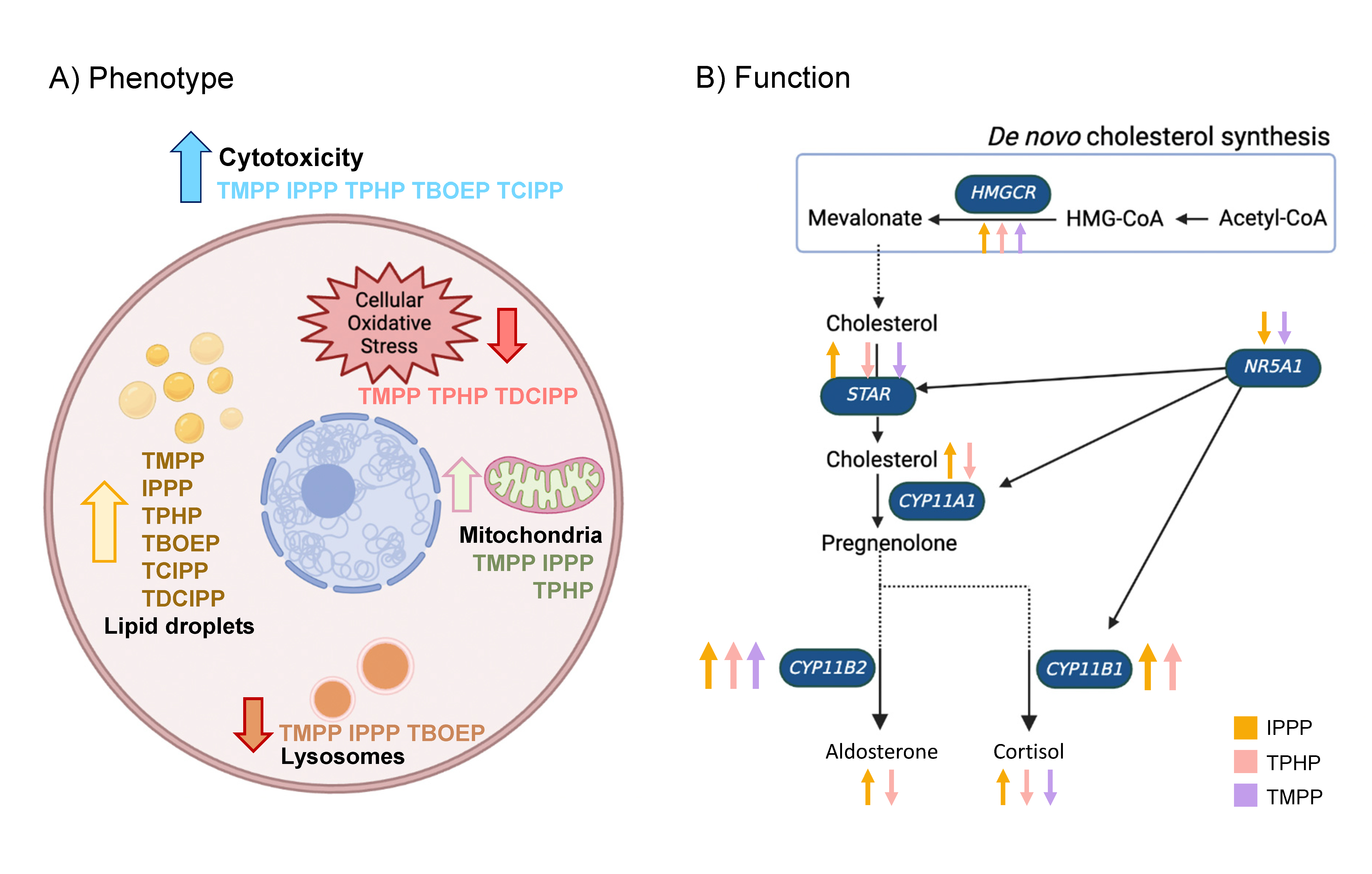
Determination of the potential adverse health effects of replacements
Research
Over the past two years, we have made great strides in accomplishing the goals that were set out in this section of the Team Grant application. Our studies on the phenotypic effects of bisphenols have been extended to assess functional consequences in both MA-10 Leydig cells and KGN granulosa cells. Phenotypic effects of plasticizers and organophosphate esters on MA-10, KGN, C18-4 spermatogonial, H295R adrenal, HepG2 liver and TM4 Sertoli cells have demonstrated that lipid droplets and lysosomes are the endpoints that respond most dramatically to exposure to replacement EDCs.
Findings
Exposing limb buds to bisphenols revealed that some replacements had more potent effects than bisphenol A while others showed fewer effects. In contrast, results from rat fetal testis organ culture suggested that only two of the replacement bisphenols showed any toxicity with the remaining bisphenols, plasticizers and organophosphate esters having minimal activities.
All of these studies have been published in Toxicological Sciences, Endocrinology, and Biology of Reproduction.

Summary of the A) phenotypic and B) functional effects of OPEs on H295R human adrenal cells. A) Exposure to most OPEs increased cytotoxicity, reduced oxidative stress levels, increased the numbers of mitochondria, decreased lysosome numbers and lysosomal intensity, and increased the area of lipid droplets. B) The three triaryl-OPEs targeted the steroidogenic pathway by affecting the expression of key enzymes involved in the rate-limiting steps in cholesterol and steroid biosynthesis, resulting in alterations in the levels of cortisol and aldosterone. A larger arrow suggests a greater effect size, indicating a more pronounced impact of OPEs on the endpoints. IPPP: yellow arrow; TPHP: pink arrow; TMPP: purple arrow.

Representative fluorescence microscopy images of control and bisphenol A (BPA)-exposed triple transgenic murine embryonic limb buds. Gestation day 13 forelimbs were cultured in the presence of vehicle, 1, 10, 50, or 100 μM BPA; then, imaged on days 1, 3, and 6 of the 6-day culture period. Collagen type II alpha 1-enhanced cyan fluorescent protein (COL2A1-eCFP): proliferative chondrocytes; collagen type II alpha 1-enhanced cyan fluorescent protein (COL10A1-mCherry): hypertrophic chondrocytes; and collagen type I alpha 1-yellow fluorescent protein (COL1A1-YFP): osteoblasts.
Publications
You will find a complete list of articles published and presentations made by the Aim 2 team in the "Knowledge Transfer" section of this website.